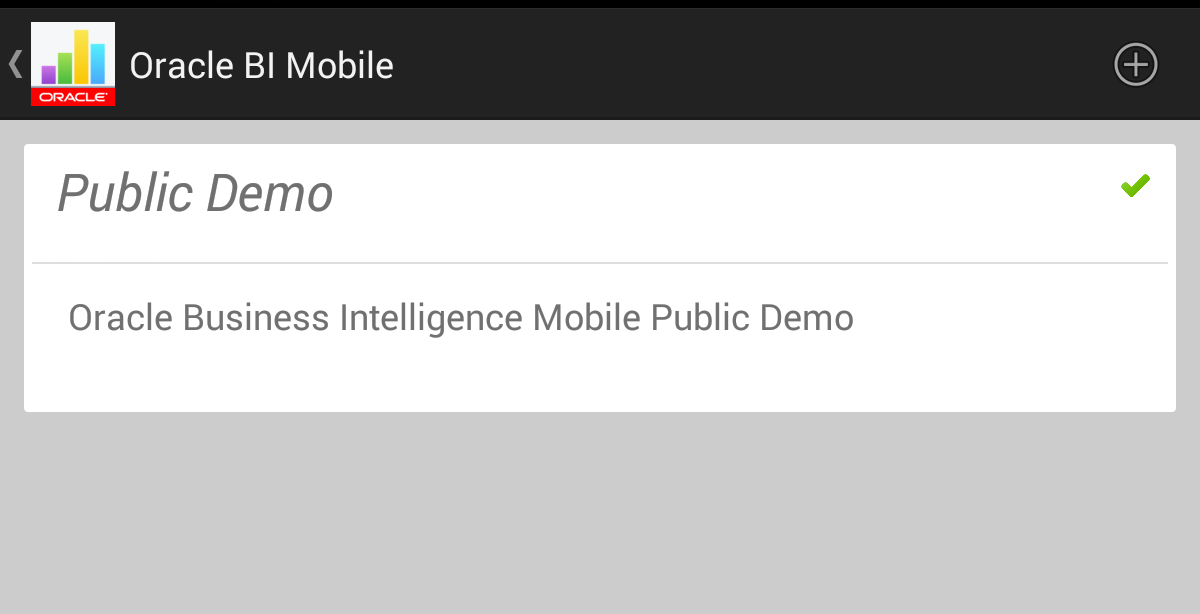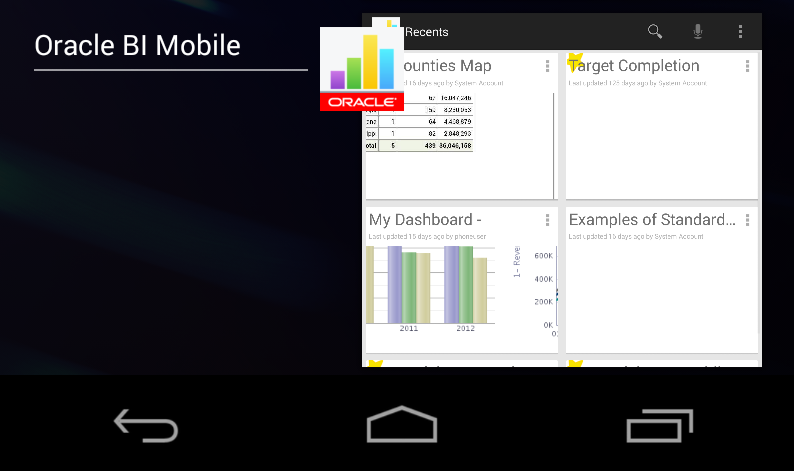Starting Oracle BI Mobile
You start the Oracle BI Mobile application from the Home screen on your device.
Note:
If the Oracle BI Presentation Services server that you are connecting to is behind a firewall, you need to connect through a Virtual Private Network (VPN). See your administrator for more information.
This section is organized as follows:
Launching Oracle BI Mobile for the First Time
You open the Oracle BI Mobile application as you open any other Android application, by tapping its launcher icon in the Home screen. The first time you use the Oracle BI Mobile application, however, you are presented with the licensing screen, then a login page that provides an initial server connections screen in which you add your server configuration.
To launch Oracle BI Mobile for the first time:
Once you are signed in, you can modify your server configuration or add a new server connection by tapping the Menu icon (the three stacked squares) and then Connections. See Configuring Oracle BI Mobile.
Returning to Oracle BI Mobile
When you have left Oracle BI Mobile and are returning, for example, after leaving it and working with other applications, Oracle BI Mobile returns you to the view you were previously on (and to your previously selected server connection).
To quickly return to Oracle BI Mobile from another application, tap the Recents button in the bottom navigation bar, then tap the Oracle BI Mobile icon as shown in the following figure.
If your user state is no longer preserved, for example, if you have rebooted the device, or the operating system purged the session after a long delay, or the authentication has timed out, then Oracle BI Mobile automatically attempts to authenticate to the connection you last used.


